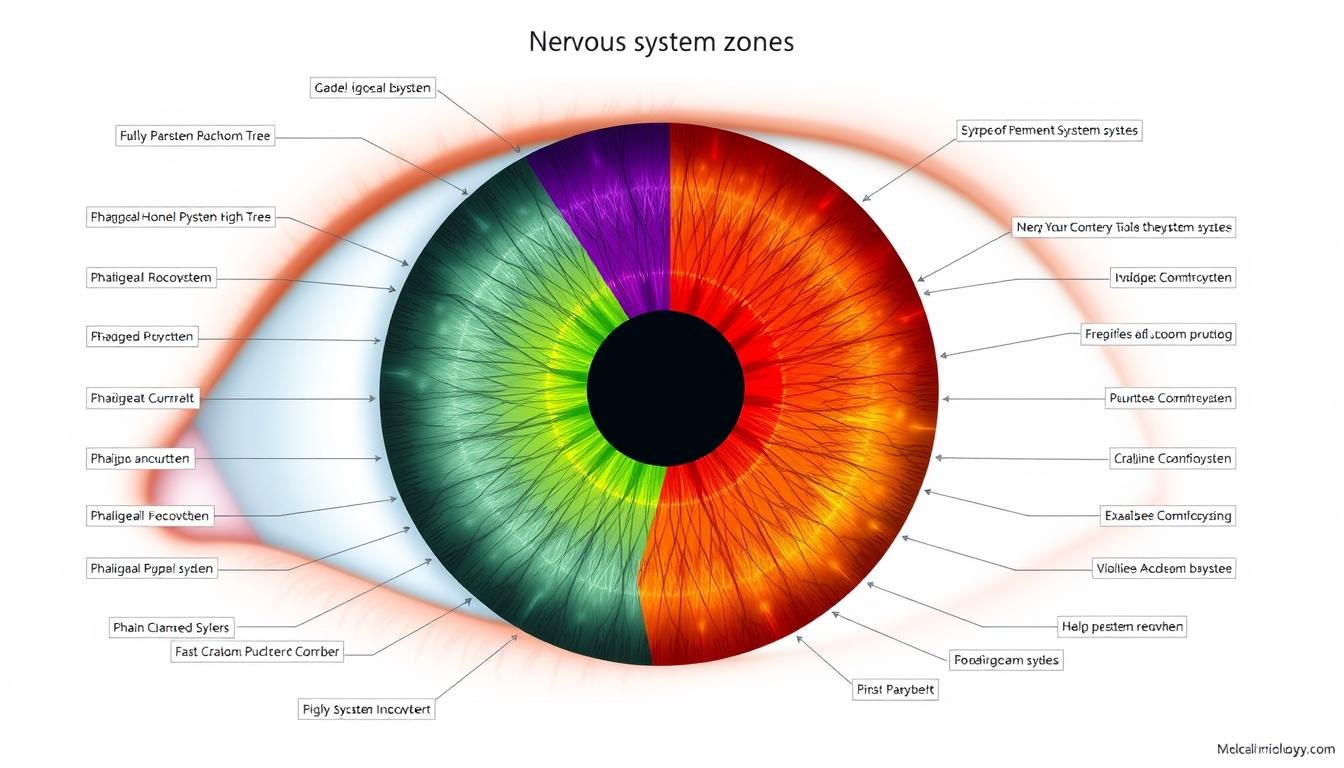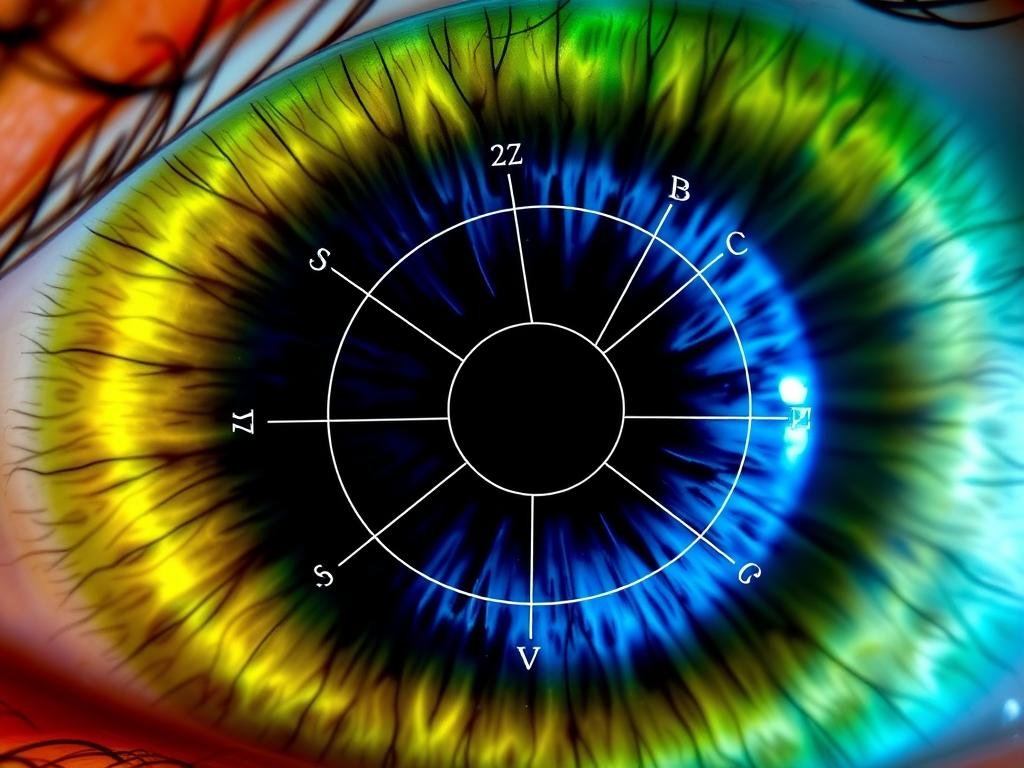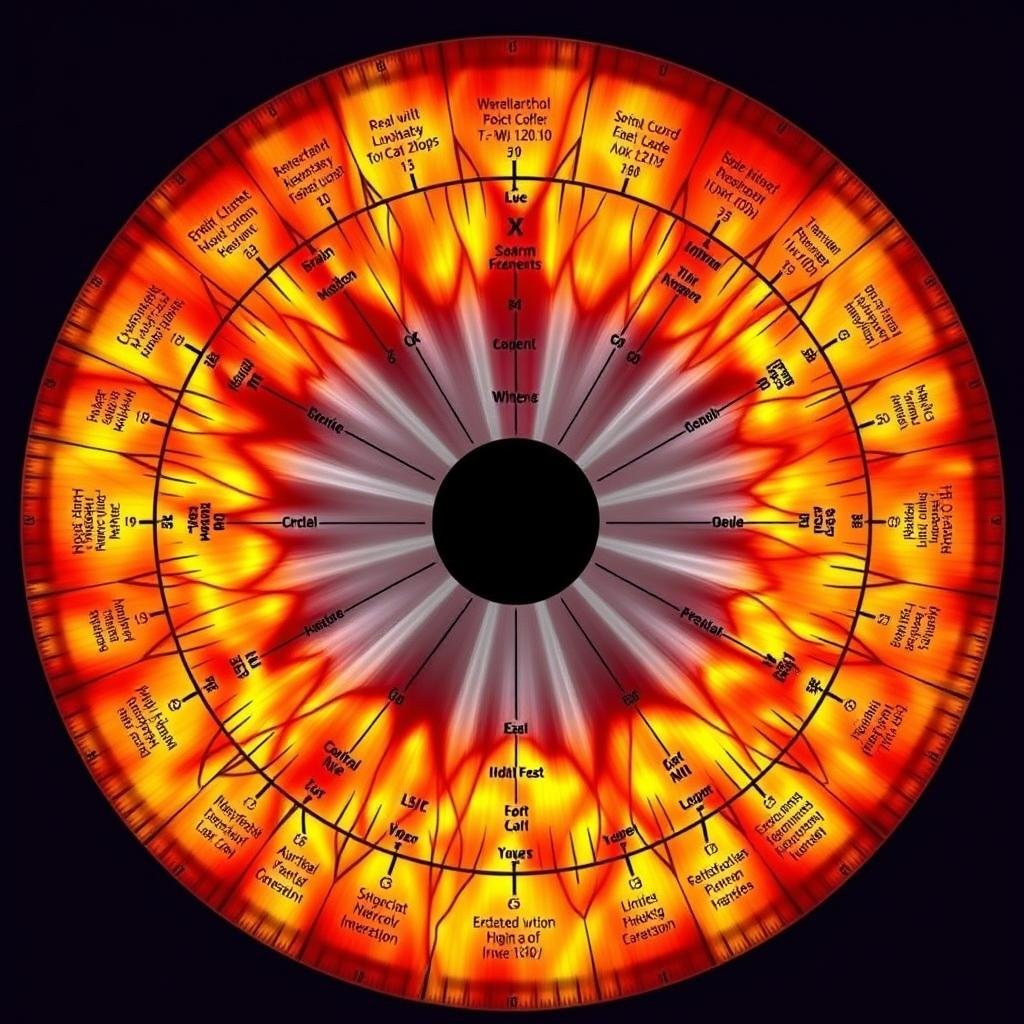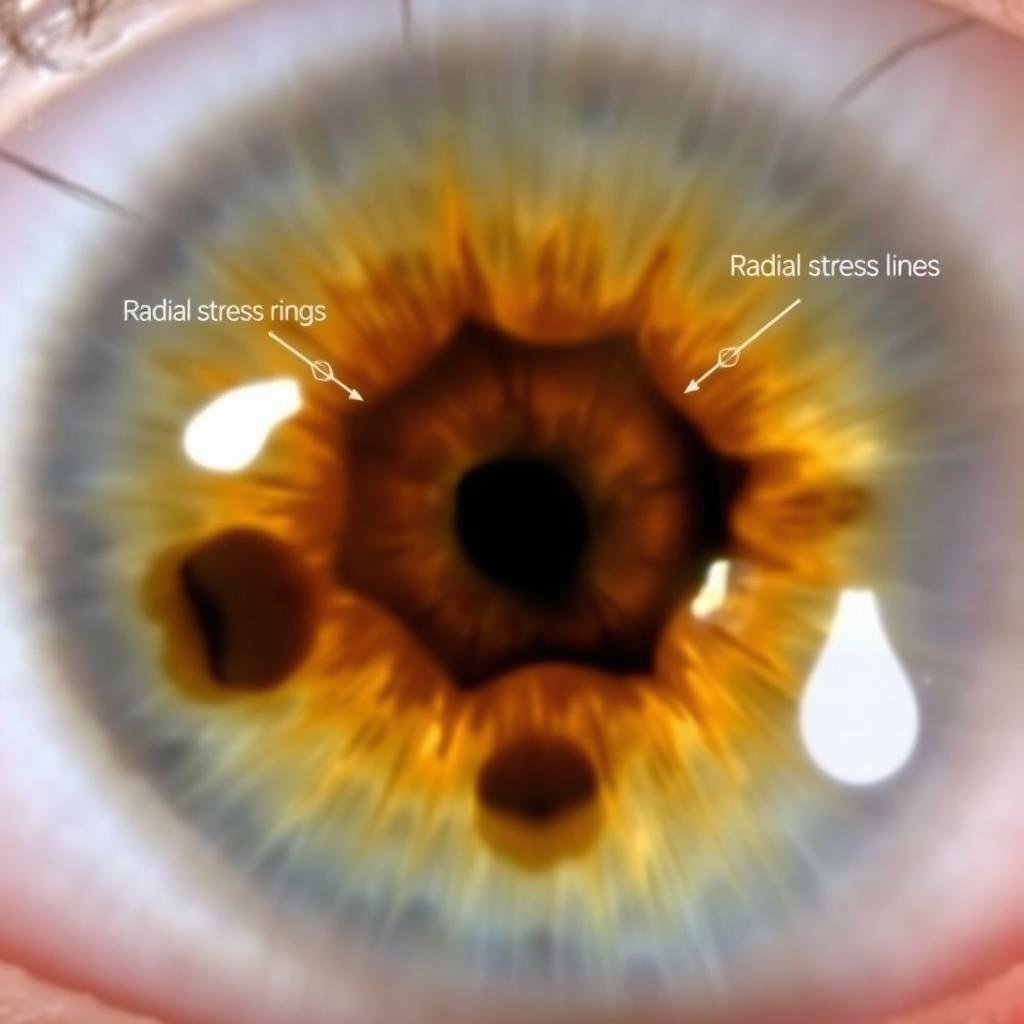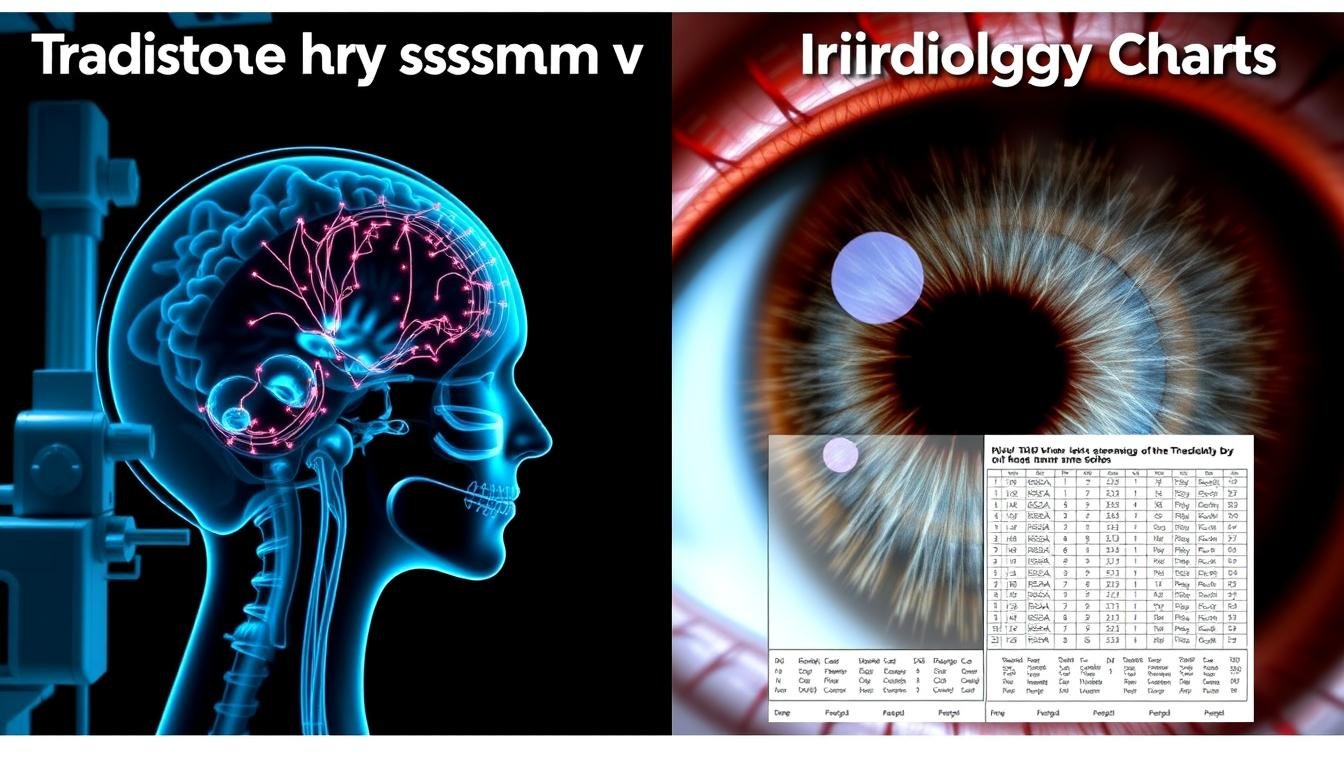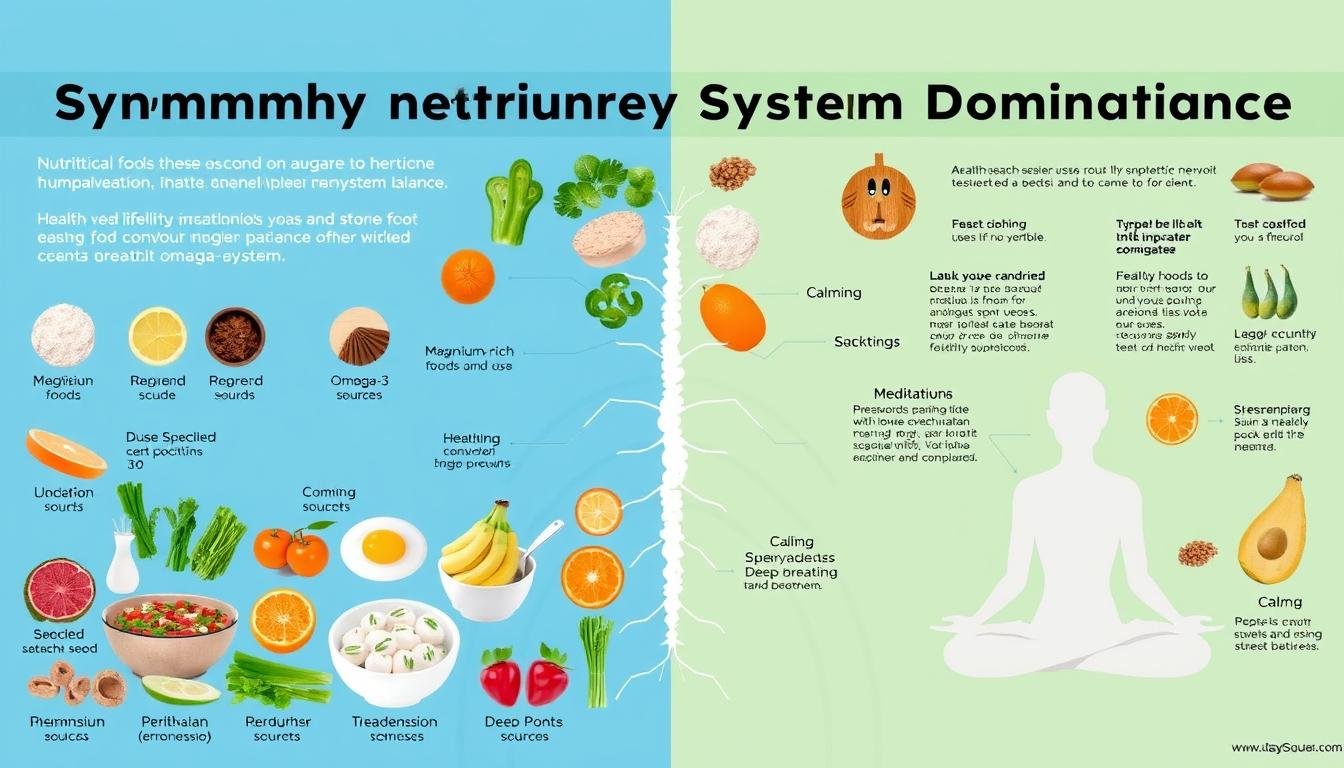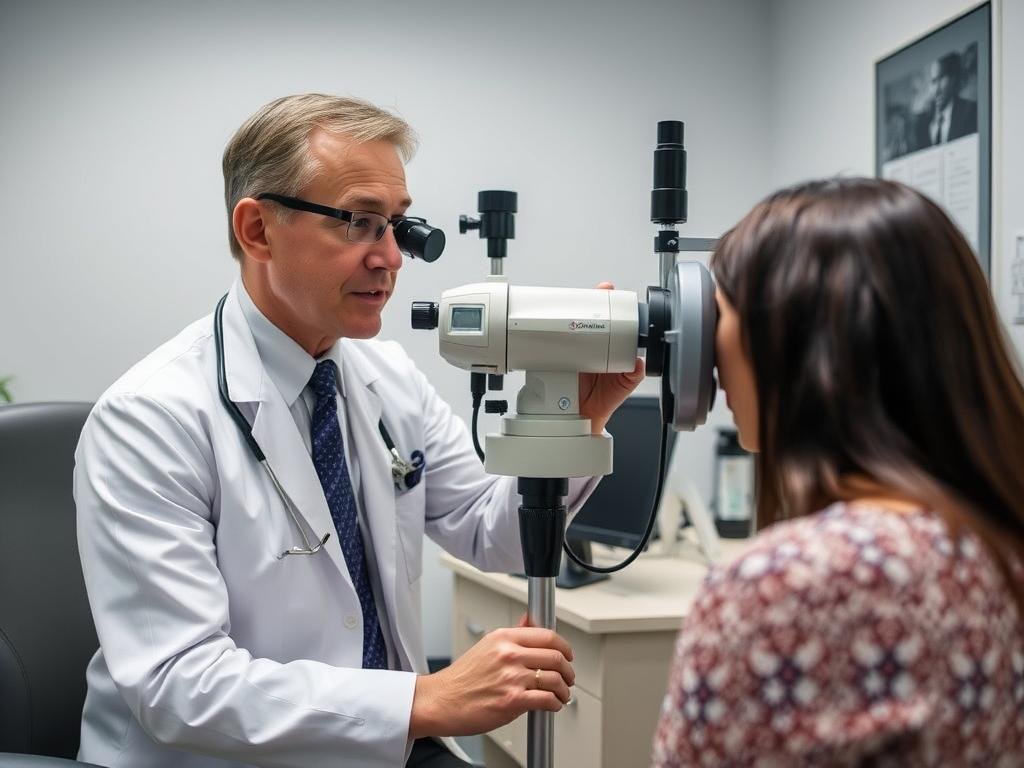The human iris contains remarkable insights about our health, particularly regarding our nervous system and stress levels. An Iridologická tabuľka serves as a detailed map that allows practitioners to identify potential health concerns by examining the colored part of your eye. This ancient practice, combined with modern understanding, offers a unique window into how stress affects your body and reveals imbalances in your nervous system before they manifest as serious conditions.In this comprehensive guide, we’ll explore how Iridológia can be used specifically for nervous system analysis and stress detection. You’ll discover the specific zones, markings, and patterns that indicate various nervous system conditions and learn how practitioners use these visual indicators to develop personalized health recommendations.



A comprehensive Iridologická tabuľka showing the mapped zones corresponding to nervous system functions
Understanding the Fundamentals of Iridológia
Iridology is the study of the iris—the colored part of your eye—to assess potential health conditions. Practitioners believe that different zones of the iris correspond to various organs and systems in the body, with specific areas dedicated to the nervous system.
The Science Behind Iris Analysis
The iris contains thousands of nerve endings connected to the brain via the optic nerve. These connections create a detailed map that reflects the condition of various body systems. An Iridologická tabuľka divides the iris into zones that correspond to different organs and systems, with specific regions dedicated to the central and peripheral nervous systems.

Close examination of iris patterns reveals nervous system health indicators
Historical Development of Iridológia
Moderný Iridologická tabuľka has evolved significantly since its inception in the 19th century. Hungarian physician Ignatz von Peczely is often credited with developing the first comprehensive charts after observing changes in an owl’s iris following injury. Today’s charts are more detailed and incorporate contemporary understanding of physiology and neurology.
Iridologická tabuľka Zones Corresponding to Nervous System Functions
On an Iridologická tabuľka, specific zones relate directly to different aspects of the nervous system. Understanding these zones is crucial for accurate interpretation of nervous system health.
Central Nervous System Indicators
The areas near the pupil and in the upper regions of the iris typically correspond to the brain and central nervous system. Practitioners look for these specific markers:
- Brain Ring: A circular formation around the pupil that indicates cerebral function
- Autonomic Nerve Wreath: The boundary between the pupillary and ciliary zones that reflects autonomic nervous system balance
- Cortex Zone: The outermost region that can show stress impacts on cognitive function
- Medulla Markings: Specific patterns indicating brainstem and regulatory function
Peripheral Nervous System Mapping
The mid and outer regions of the iris often correspond to the peripheral nervous system, with specific areas relating to:
- Nerve Fibers: Radial lines extending from the pupil that indicate nerve pathway health
- Sympathetic Nervous System: Often represented in the right iris
- Parasympathetic Nervous System: Frequently mapped in the left iris
- Spinal Nerve Indicators: Arranged in a circular pattern corresponding to vertebral segments
Stress Pattern Recognition Through Iridologická tabuľka Topography
Chronic stress leaves distinct markers in the iris that can be identified using an Iridologická tabuľka. These stress signatures appear as specific patterns, colors, and textures.
Adrenal Fatigue Markers
The adrenal glands play a crucial role in stress response. On an Iridologická tabuľka, the adrenal zone typically appears in the lower regions of the iris. Signs of adrenal fatigue include:


Adrenal fatigue markers visible on an Iridologická tabuľka
- Dark rings or shadows in the adrenal zone
- Radial furrows extending from the adrenal region
- Color changes from bright to dull in affected areas
- Structural changes in iris fibers indicating chronic stress
Autonomic Nervous System Balance
The autonomic nerve wreath—a circular formation visible on the Iridologická tabuľka—reveals the balance between sympathetic (“boj o boj proti letu”) and parasympathetic (“odpočinok”) systems. Imbalances appear as:
- Irregular or broken nerve wreath patterns
- Protrusions or depressions in the wreath structure
- Color variations indicating hyperactivity or underactivity
- Structural changes corresponding to chronic autonomic imbalance
Case Study: Before and After Stress Management Using Iridologická tabuľka Analýza
To illustrate the practical application of Iridologická tabuľka analysis for stress management, consider this real-world case study of a client who underwent iris analysis before and after implementing targeted stress reduction protocols.
Initial Assessment
Sarah, a 42-year-old executive, came for an iridology consultation reporting chronic fatigue, insomnia, and anxiety. Her initial iris analysis revealed:
- Pronounced stress rings in the autonomic nerve wreath
- Darkened adrenal zone indicating potential adrenal fatigue
- Radial stress lines extending from the pupil
- Irregular nerve fiber patterns in the central nervous system zone

Initial iris analysis showing significant stress markers
After 6 Months of Targeted Interventions
Based on her Iridologická tabuľka analysis, Sarah implemented a personalized protocol including stress management techniques, nutritional support, and lifestyle modifications. After six months, her follow-up iris analysis showed:
- Reduced prominence of stress rings
- Lightening of the adrenal zone
- Fewer radial stress lines
- More regular nerve fiber patterns

Follow-up iris analysis showing improved nervous system markers
Discover Your Unique Iris Patterns
Curious about what your iris reveals about your nervous system health? Our certified iridologists can provide a personalized analysis using advanced Iridologická tabuľka mapping techniques.
Objednajte si konzultáciu o iridológii
Traditional vs. Iridologická tabuľka-Based Nervous System Assessment
Understanding how iridology compares to conventional methods helps appreciate its unique contributions to nervous system assessment.
| Assessment Factor | Traditional Medical Assessment | Iridologická tabuľka Assessment |
| Early Detection Capability | Often detects issues after symptoms appear | May identify tendencies before symptomatic manifestation |
| Invasiveness | Often requires blood tests, imaging, or other invasive procedures | Completely non-invasive visual examination |
| Holistic Perspective | Typically focuses on specific symptoms or systems | Provides whole-body interconnection insights |
| Stress Pattern Recognition | Relies on hormone tests and patient reporting | Directly observes stress manifestations in iris tissue |
| Vedecká validácia | Extensively researched and clinically validated | Limited scientific studies, relies more on empirical observation |

Visual comparison of traditional medical imaging and Iridologická tabuľka analysis for nervous system assessment
How to Interpret Your Own Iridologická tabuľka for Nervous System Health
While professional analysis is recommended, understanding the basics of Iridologická tabuľka interpretation can help you become more aware of your nervous system health.
Basic Self-Assessment Steps
Follow these steps to conduct a preliminary examination of your iris:
- Use a small flashlight and a magnifying mirror in good lighting
- Identify your iris type (blue, brown, mixed) as interpretation varies by color
- Look for the autonomic nerve wreath—the circular boundary around your pupil
- Note any prominent markings, colors, or patterns in the nervous system zones
- Compare observations with standard Iridologická tabuľka references

Basic self-assessment technique using an Iridologická tabuľka
Dôležitá poznámka: Self-assessment should never replace professional consultation. Iridologická tabuľka interpretation requires training and experience. Use self-examination only as a preliminary step before seeking qualified guidance.
Stress Management Protocols Based on Iridologická tabuľka Findings
Once nervous system patterns are identified through Iridologická tabuľka analysis, targeted interventions can be implemented to address specific imbalances.
Sympathetic Dominance Protocol
When Iridologická tabuľka analysis reveals overactivity in sympathetic nervous system zones (often appearing as darker, more pronounced markings), these approaches may help restore balance:
Výživová podpora
- Magnesium-rich foods (dark leafy greens, nuts, seeds)
- B-complex vitamins (whole grains, legumes)
- Omega-3 fatty acids (fatty fish, flaxseeds)
- Adaptogenic herbs (ashwagandha, holy basil)
Praktiky životného štýlu
- Regular parasympathetic activation through deep breathing
- Progressive muscle relaxation techniques
- Mindfulness meditation focused on body awareness
- Reduced stimulant consumption (caffeine, sugar)

Targeted interventions for sympathetic dominance patterns identified through Iridologická tabuľka analysis
Parasympathetic Support Protocol
When Iridologická tabuľka analysis shows underactivity in parasympathetic zones (often appearing as lighter, less defined areas), these approaches may help enhance function:
Výživová podpora
- Choline-rich foods (eggs, liver, cruciferous vegetables)
- Zinc-containing foods (oysters, pumpkin seeds)
- Probiotics for gut-brain axis support
- Nervine herbs (lemon balm, passionflower)
Praktiky životného štýlu
- Vagus nerve stimulation techniques
- Regular exposure to natural environments
- Consistent sleep-wake cycles
- Social connection and positive emotional experiences
Get Your Personalized Stress Recovery Plan
Our certified iridologists can develop a customized protocol based on your unique Iridologická tabuľka patterns. Address your nervous system imbalances with targeted, personalized recommendations.
Create Your Stress Recovery Plan
Vedecký pohľad na Iridologická tabuľka Analýza
It’s important to consider both the supportive evidence and limitations of Iridologická tabuľka analysis for nervous system assessment.
Podporné dôkazy
- The iris contains thousands of nerve endings connected to the brain via the optic nerve
- Autonomic nervous system influences iris musculature and blood vessels
- Case reports document correlations between iris changes and health conditions
- Long history of empirical observation by practitioners
- Non-invasive nature makes it a low-risk complementary assessment
Limitations and Considerations
- Limited peer-reviewed research validating specific iris-organ correlations
- Variation in interpretation methods between different schools of iridology
- Potential for confirmation bias in assessment
- Should be used as a complementary tool, not a replacement for medical diagnosis
- Results should be correlated with other health assessments

Ongoing research into Iridologická tabuľka correlations with nervous system function
“While iridology remains controversial in conventional medicine, its value as a complementary assessment tool lies in its ability to potentially identify tendencies and imbalances before they manifest as clinical symptoms. The non-invasive nature and holistic perspective it offers can complement other health assessments when used appropriately.”
— Journal of Integrative Medicine Review, 2022
Finding Qualified Iridologická tabuľka Practitioners
For accurate nervous system assessment using Iridologická tabuľka analysis, working with a qualified practitioner is essential. Here’s how to find the right professional:
Qualifications to Look For
- Certification from recognized iridology organizations
- Additional health credentials (naturopathic doctor, holistic health practitioner)
- Specific training in nervous system iridology
- Experience with stress-related conditions
- Professional approach that integrates conventional health understanding

A qualified iridologist using specialized equipment for detailed Iridologická tabuľka analysis
Questions to Ask Before Your Consultation
- What certifications and training do you have in iridology?
- How long have you been practicing iris analysis?
- What equipment do you use for iris examination?
- How do you integrate Iridologická tabuľka findings with other health assessments?
- What follow-up support do you provide after the analysis?
Ready to Discover What Your Iris Reveals?
Our certified iridologists specialize in nervous system and stress pattern analysis using advanced Iridologická tabuľka techniques. Book your comprehensive consultation today.
Book a Consultation to Analyze Your Iridology Chart
Conclusion: The Value of Iridologická tabuľka Analysis for Nervous System Health
Ten Iridologická tabuľka offers a unique window into nervous system health and stress patterns that may not be readily apparent through other assessment methods. While it should be used as a complementary tool rather than a standalone diagnostic method, its non-invasive nature and potential for early detection make it a valuable addition to a holistic health approach.
By understanding the specific zones, markings, and patterns related to the nervous system on an Iridologická tabuľka, both practitioners and individuals can gain insights into potential imbalances and address them before they develop into more serious conditions. The integration of traditional wisdom with contemporary understanding creates a bridge between ancient practices and modern health approaches.
Whether you’re dealing with chronic stress, seeking to optimize nervous system function, or simply curious about what your iris reveals about your health, Iridologická tabuľka analysis offers a fascinating perspective that may complement your health journey. Consider consulting with a qualified practitioner to discover the unique story your iris tells about your nervous system health.

Improved wellbeing through targeted interventions based on Iridologická tabuľka analysis
Take the First Step Toward Nervous System Balance
Discover what your iris reveals about your nervous system health and stress patterns. Our expert iridologists provide detailed Iridologická tabuľka analysis and personalized recommendations.
Book a Consultation to Analyze Your Iridology Chart



